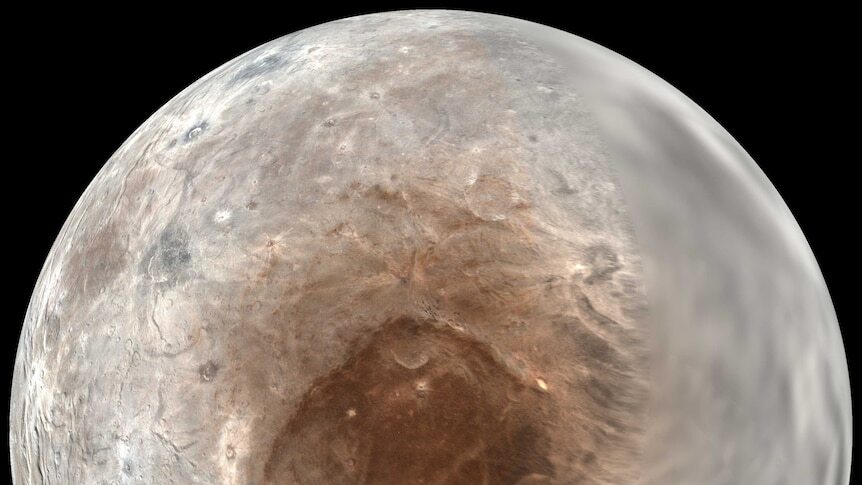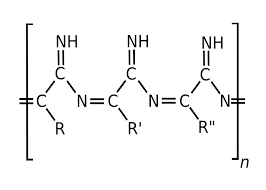The red cap at the north pole of Pluto’s moon Charon was formed as a result of the conversion of methane into substances called “tholins”. Research in the laboratory allowed us to reveal the details of this process.

“Red cap” of hydrocarbons
When, in 2015, the New Horizons spacecraft was able to view the surface of Pluto’s largest moon for the first time, its most remarkable detail turned out to be a large red spot. It covers the area of Charon’s north pole. Scientists have suggested that it is composed of hydrocarbons called tholins.
Tholins are widely distributed in the surroundings of the Solar System. On Charon, they are formed from methane, which is “blown out” by the solar wind from Pluto. However, until now, the details of this process remained unknown. Researchers from the Southwest Research Institute (SwRI) tried to uncover them.
The article published in Science Advances presents the results of laboratory studies of the formation of tholins from methane in conditions that resemble Charon as much as possible. In conditions of high vacuum and lack of sunlight, scientists have seen how methane under the action of Lyman-alpha radiation forms the red cap of Charon.

Lyman-alpha and ethane inium
Lyman-alpha is a line of radiation in the spectrum of atomic hydrogen, which occurs only when it is ionized in a non–thermal way. These processes can only occur away from the Sun. As SwRI experiments have shown, it is under the action of these photons that methane decays into tholins that color the north pole of Charon.
However, the researchers from SwRI did not stop there. They modeled the changes in Charon’s ephemeral atmosphere when spring begins in the northern hemisphere. It turned out that under these conditions, methane should evaporate and be transported to the southern hemisphere. But the situation is corrected by ethane, which is synthesized from it in large quantities.
This hydrocarbon by itself cannot color the surface red. However, it forms small crystals that cover the north pole with a layer of frost that may not melt for decades.
And the solar wind, which still reaches the surface of Charon, is able to cause a photocatalytic reaction in methane and turn it into tholins. That is, in fact, the “red cap” of Charon is formed in two ways, interacting with each other in a complex way.
According to phys.org
Follow us on Twitter to get the most interesting space news in time
https://twitter.com/ust_magazine

